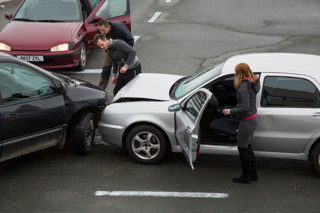There is a 34% increase in accident rates among motorists driving between 5-8pm in the weeks directly following the October clock change, new analysis from telematics car insurer, Insurethebox, suggests.
Young drivers, aged 17-25, with less experience on the roads are likely to be more vulnerable than older more experienced drivers – especially if this is their first experience driving in wintry conditions since passing their test, as their normal drive home from work will be much darker than usual after this weekend. The risk of having an accident increases when road conditions are poorly lit, wet and slippery.
Male drivers are most at risk of an accident, with a 37% increase in accidents between the hours of 5-8pm compared to female drivers, who see a 30% increase in accidents.
And it’s not just at the end of the day; Wales and the Midlands saw the biggest increase in accidents during the morning rush hour. Between the hours of 6-9am the likelihood of having an accident increased by over one-half in Wales (52%) and over one-third in the Midlands (34%).
Scotland and the North saw the highest accident increases overall, suggesting that the clock change and early darkness have the biggest impact on drivers in the North.
Sarah Vaughan, head of pricing at Insurethebox, said: “Insurethebox data shows that accident risk increases as a direct result of the clocks going back.
“For many young drivers, the evenings after the clock change will be their first experience of driving in the dark, coping with different conditions like reduced visibility.”
Insurethebox holds more than 4 billion miles of driving data accumulated over nearly 10 years, and this extensive dataset means it can spot trends. As the clocks change this weekend, it is highlighting its findings to encourage all motorists to be mindful of the lower visibility and watch out for wet weather.
Vaughan continued: “Insurethebox has been encouraging young drivers to cut their speed over the last 2 years, and through proactively contacting drivers who frequently speed we have seen a 28% reduction in speeding instances among the highest risk drivers and cut the frequency of accidents in young drivers by 9%. That’s 80,000 drivers reducing their speed, nearly 1,000 serious road traffic accidents prevented, and numerous fatalities and serious injuries avoided.”
























Login to comment
Comments
No comments have been made yet.